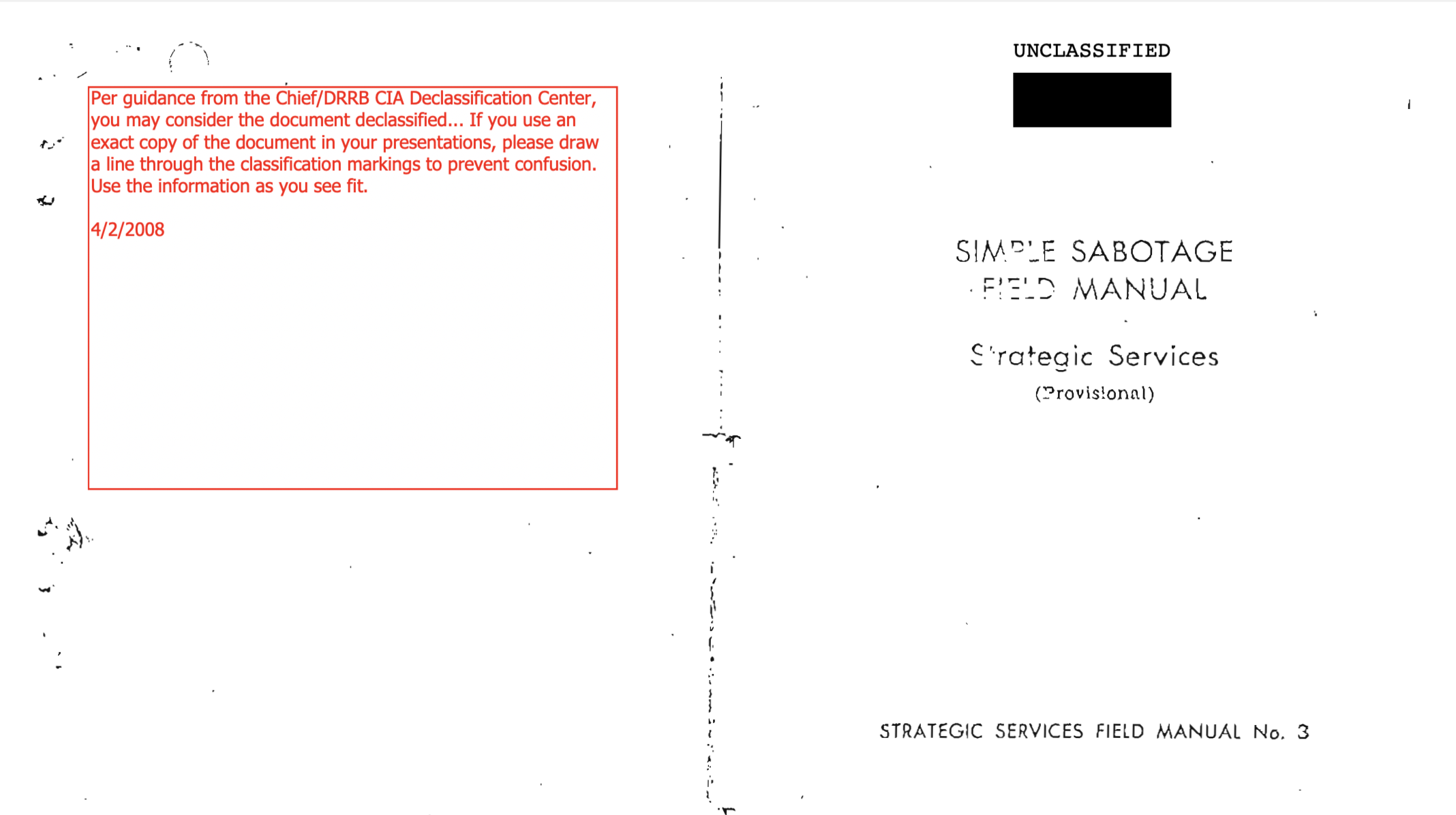Lessons learned from the CIA sabotage field manual

Have you heard of the CIA field sabotage manual? It’s one of my favourite conversation starters at dinner with friends and industry colleagues. Written in 1944, the manual outlines a variety of ways one could sabotage organisations and workplaces - without getting caught. Its tactics are designed to seem unobtrusive and plausibly helpful, making it difficult to not just notice the sabotage but also stop it.
We've all had co-workers or managers who seem to be following the manual to the letter. Sometimes, we even do it ourselves! For example, here are a few methods listed under the “General Interference with Organizations and Production” section:
- “When possible, refer all matters to committees, for ‘further study and consideration.’ Attempt to make the committees as large as possible - never less than five.”
- “Hold conferences when there’s more critical work to be done.”
- “Work slowly […] contrive as many interruptions to your work as you can.”
- “Insist on perfect work in relatively unimportant products.”
These days it is, of course, very unlikely that the “sabotage” we observe is intentional. We should assume that our colleagues have good intent. But that doesn't diminish the harm that can be done by an unwitting saboteur.
If any of this is happening and you notice, you can limit and even undo the negative effects. But rather than calling out the disruption directly - rarely a tactic to win hearts and minds - there are specific counter-strategies we can employ.
Below you’ll find some extracts from the Blackmill field counter-sabotage manual for the aforementioned predicaments.
“When possible, refer all matters to committees, for ‘further study and consideration.’ Attempt to make the committees as large as possible - never less than five.”
Committees are often where decisions go to die. It’s an easy way to delay a decision on practically any topic, because the responsibility is distributed across multiple people. When it’s everyone’s responsibility, it becomes no-one’s.
Instead of forming a committee, ask: who is the best-placed person in the organisation to own this decision? Identify a person based on their role or subject matter expertise, and give them ownership over the decision. They become accountable for the speed and quality of the decision-making process. It’s their responsibility to move forward, and ensure that the right people are consulted and included in the decision.
Being clear on decision ownership alleviates pressure from other leaders, but it is also tremendously empowering for the owner.
“Hold conferences when there’s more critical work to be done.”
A ‘conference’ is not a meeting; sometimes meetings are critical for a small group of collaborators to actually make progress and get work done. A ‘conference’ is for a larger group, a gathering of people getting together — often without a clear purpose. Sometimes these happen by accident — a recurring meeting can turn into a conference as more and more people get added, and its purpose gets muddled.
First ask yourself the question: do we need a time in everyone’s calendar for this? Could this information or status updates be shared in another way — an email, video, on Slack? Could we ask for feedback asynchronously rather than in person?
If we do need a meeting, consider the invitees. Is everyone on the list absolutely essential? We’re far more likely to get somewhere if we have a smaller group. Could we ask one person to come along, and represent others?
Next, be clear on the purpose. What is the agenda, and what is the outcome we want to achieve with the meeting? Do we have a facilitator whose role it is to guide the conversation?
“Work slowly […] contrive as many interruptions to your work as you can.”
Interruptions and context-switching stymie flow, and make it difficult for human brains to focus. When you only have a little bit of time between meetings, for instance, it is very difficult to get any meaningful work done.
Where possible, create larger blocks of uninterrupted time in your calendar for focus time. Rather than spreading out meetings and catchups to various times throughout the week, try to batch them together to give yourself more time to work without interruptions.
Some teams have success in synchronising calendars — for example, make it so that everyone’s one-ones are on Tuesdays, all team meetings are on Wednesday mornings; leaving Thursdays and Fridays relatively clear for collaboration. If everyone in the team follows a similar schedule, it becomes much easier to find time to get work done.
“Insist on perfect work in relatively unimportant products.”
It’s natural to feel that the work you or your team does — no matter what the work is — needs to live up to a certain standard. But remember that perfect is the enemy of done. ' In reality, not all work items are as important as the next.
Look at the work in front of you, and ask how important it is. A brain dump of ideas probably doesn't need as much polish as an All Hands presentation.
You can also timebox yourself. Give yourself a specific time in which to complete a task, and stick to it. For example, this article was written and edited in a 60 minute timebox. Could the article be better? Of course, but I would rather have it done than it being perfect.
And done it is.
(If your organisation suffers from unintended sabotage and you want to become an expert counter-saboteur, Blackmill can help! Get in touch.)